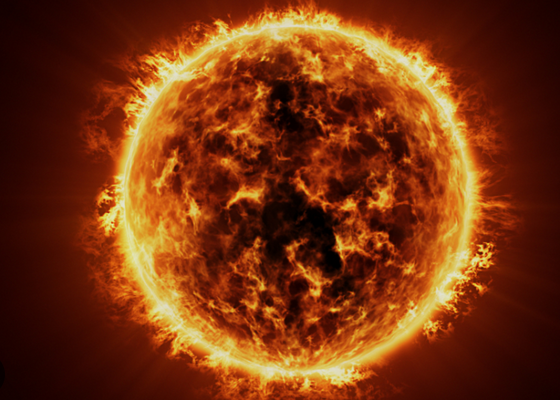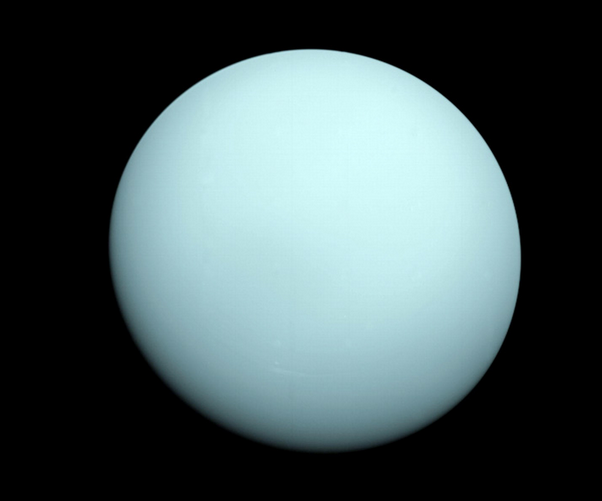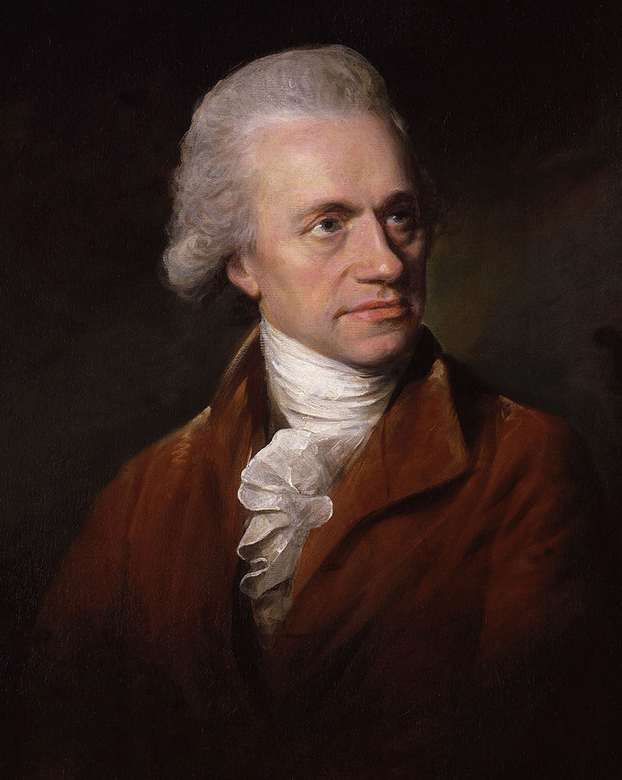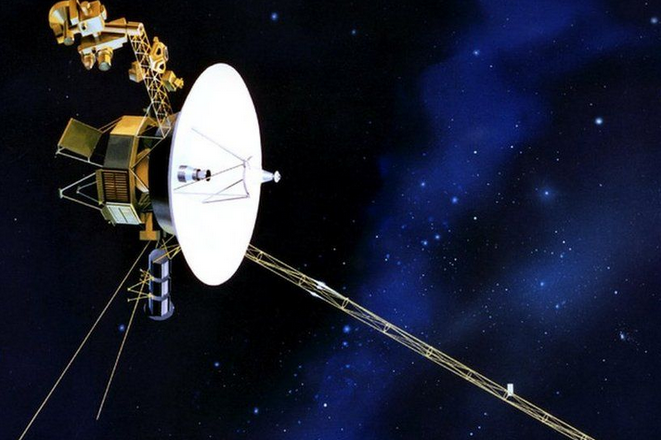Distances in our solar system are mind boggling especially when we consider that the circumference of our own planet is 24,901 miles. We see that as massive but compared to the sizes of other planets and their distances from us this is miniscule.
What Is the Sun?
The orb that is visible in our daylight sky which we know as the sun is in fact a star. This star is classified as a yellow dwarf and is central to our solar system. Earth and the other planets of our solar system orbit this vast star. In fact it is our own planet’s rotation and orbit which creates the appearance of the sun moving across our sky. It itself is stationary as we revolve around it.
How Big Is the Sun?
The sun on a clear day is visible from the earth and in fact we should never stare directly at it. This is despite it being 93 million miles away so just how big is this giant orange orb? Scientists estimate that the sun has a radius of roughly 435,000 miles.
This may sound massive but there are many known stars which are much larger. In comparison to our planet however the son is roughly 330,000 times the mass of earth and we could fit our planet into the sun 1.3 million times.

What Holds the Sun Together?
The sun because it is a star is actually a huge ball of gas which is held together by its own internal gravitational forces. It is made up of several regions which include in order from the center out:
- Core
- Radioactive zone
- Convection zone
- Photosphere
- Chromosphere
- Transition zone
- Corona
Once material exits the corona of the sun at supersonic speeds, it becomes what is known as a solar wind. This solar wind forms a huge magnetic bubble of sorts around the sun which is known as the heliosphere. It is this heliosphere that extends beyond the orbit of all the planets in our solar system. Essentially our planet as well as all others in the solar system are held within the sun’s atmosphere.
What Is Uranus?
Uranus is a gaseous cyan ice giant planet which is the seventh from the Sun in our solar system. It is the third largest planet in the solar system and has a unique 90-degree rotation angle which makes it appear to be spinning sideways. This gives the effect of it rolling like a ball as it orbits the Sun.
The 1977 launch of Voyager 2 took around 9 years to reach its close pass with Uranus which should give you an indication of how far away the planet is from Earth. Uranus is roughly 1.8169 billion miles away from Earth.
What Is an Ice Giant Planet?
Ice giants are massive planets composed mainly of elements heavier than hydrogen and helium. These might include oxygen, carbon, nitrogen and sulfur. Our solar system is home to two ice giants, Uranus and Neptune.

Ice giants form when gravity pulls together swirling gas and dust. They may form closer to a star but migrate further away over time becoming colder as they go. They usually have a smaller rocky core with most of their mass being made up of materials such as water, methane and ammonia.
Uranus’s Structure
With a mass roughly 14.5 times that of Earth’s, Uranus’ exact mass of ice in its interior is not known. Unlike standard gas giants Uranus’s composition consists of only a small amount of hydrogen and helium. Its mantle is mainly water, ammonia and methane in ice form while the atmosphere consists of the gases hydrogen, helium and methane. The Core of the plant is thought to be a dense rock which may be a nickel-iron silicate.
The extreme pressures and heat deep in the planet are believed to break up methane molecules with carbon atoms leading to condensation into crystals that rain down through the mantle as hailstones. Experiments at the Lawrence Livermore National Laboratory suggest that the mantle may comprise an ocean of metallic liquid carbon.
Does Uranus Have Moons and Rings?
The planet Uranus has at present 27 known moons most of which are named for characters from the works of William Shakespeare and Alexander Pope. This goes against the tradition of other planets’ moons which are usually named based on Greek and Roman mythological characters.
It was Sir William Herschel who discovered the first two moons of Uranus, Titania and Oberon, which he spotted on January 11, 1787, roughly six years after he had discovered the planet itself. It would be half a century before telescope technology improved enough to start seeing some of the planet’s other moons.

Saturn is probably the most famous planet with rings but Uranus also has some of its own. It in fact has two sets. The inner system consists of nine rings that are mostly narrow and dark grey in color. The outer two rings are different with the innermost being a reddish color and the outermost appearing blue.
The rings in order of distance from the planet are named Zeta, 6, 5, 4, Alpha, Beta, Eta, Gamma, Delta, Lambda, Epsilon, Nu, and Mu. Several of the larger rings are also surrounded by belts of fine dust. It was again William Hershel who in his continued observations of Uranus determined there may be rings around Uranus. In his journal he noted on February 22, 1789 “A ring was suspected.” He accompanied this with a sketch and noted that it appeared reddish in color.
History of the Observation of Uranus
Despite being visible from Earth with the naked eye Uranus was visible to the astronomers of the ancient world. Unlike some closer planets to Earth however these astronomers did not realize it was a planet because of its dimness and slow orbit. The assumption was that it was a star.
It was Sir William Herschel who first used a telescope to get a better look at Uranus in 1781 although initially he thought it may still be a star or perhaps a comet. Two years later it was the further observations of astronomer Johann Elert Bode that confirmed Uranus as a planet.
Herschel wrote of his observations after making them in his home garden. He wrote in his notes “In the quartile near Tauri … either [a] Nebulous star or perhaps a comet.” Just four days later he updated his observations by noting “I looked for the comet or nebulous star and found that it is a comet, for it has changed its place.”
His findings were submitted to the Royal Society with the assertion that he had found a new comet although there was implicit indication that it may be a planet. Hershel was convinced his find was a comet but other astronomers were already working to the assumption it was more likely a planet.
Space Exploration of Uranus
In 1977 the United States launched Voyager 2 with the intention of reaching Neptune. On the 24th of January 1986 it passed by Uranus within 81,500 kilometers of the cloud tops. In its past it made studies of the structure and chemical composition of the planet’s atmosphere. Special interest was focused on its weather conditions due to the planet’s unique rotation.

Voyager 2 also made in depth studies of its five largest moons and discovered a further 10 new ones. It also studied the planet’s nine known rings and discovered two more that were not previously observed. This so far has been the only flyby of Uranus by terrestrial spacecraft. Several other missions have been suggested but have not made it beyond early planning stages.
How Far Is Uranus From the Sun?
The distance from the Sun to the planet Earth equates to a unit of measurement known as astronomical units (AU). Uranus is around 19.8 AU from the Sun which roughly equates to an average distance of 1.8 billion miles (2.9 billion kilometers).
This is an impressive distance which means that it takes 2hrs 40 minutes for light to reach Uranus from the Sun. It takes around 84 Earth years for Uranus to complete one orbit of the Sun and has an interesting 97.77 degree tilt. This means that on Uranus there are some of the most extreme seasons.
Final Thoughts
Uranus is the 7th planet from the Sun so obviously it isn’t the furthest away in our solar system. However, it is still 1.8 billion miles away on average. Its orbit, like all the planets in our solar system, is not perfectly circular so at various times in its 84 year journey around the Sun its distance from this star can be very different.
